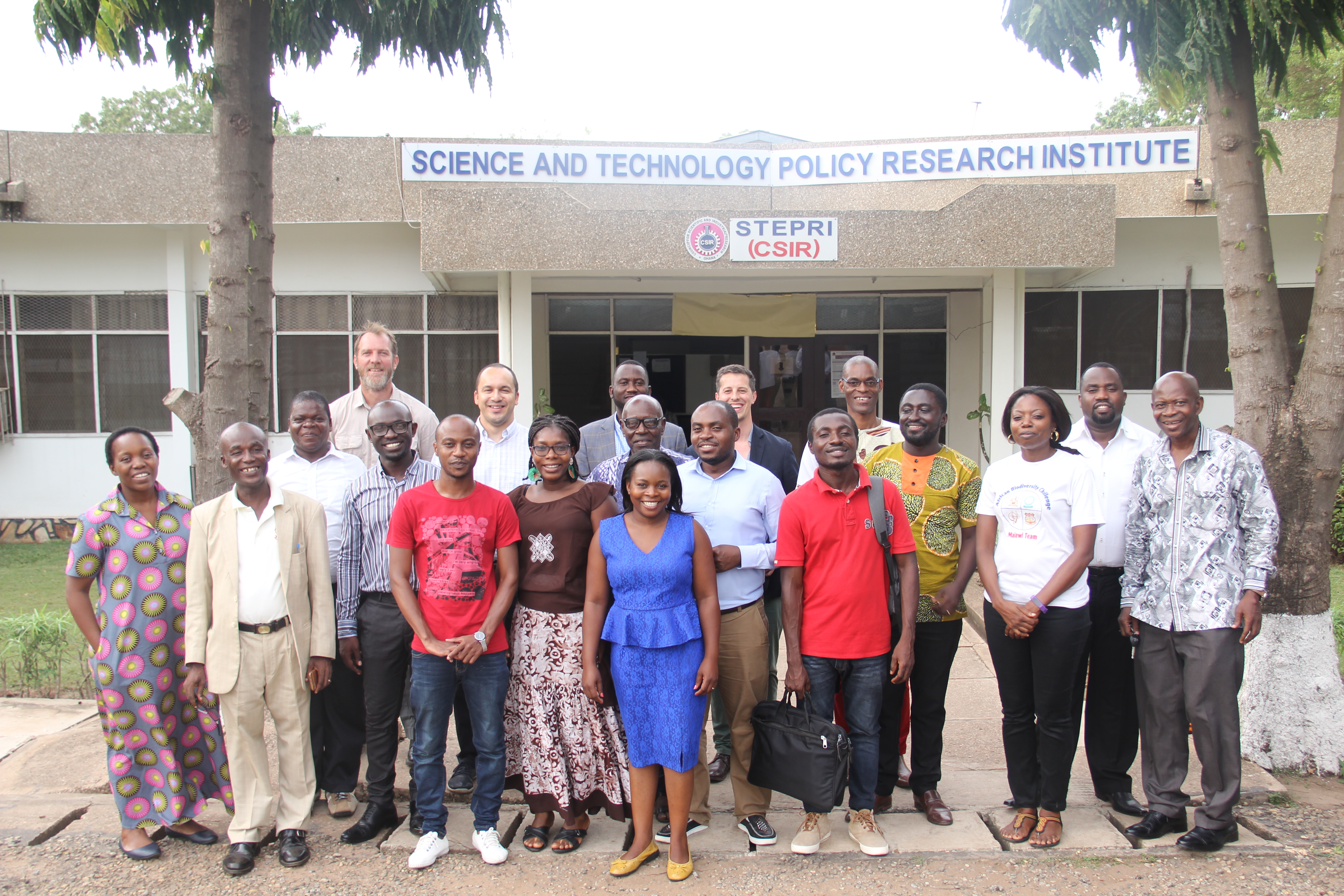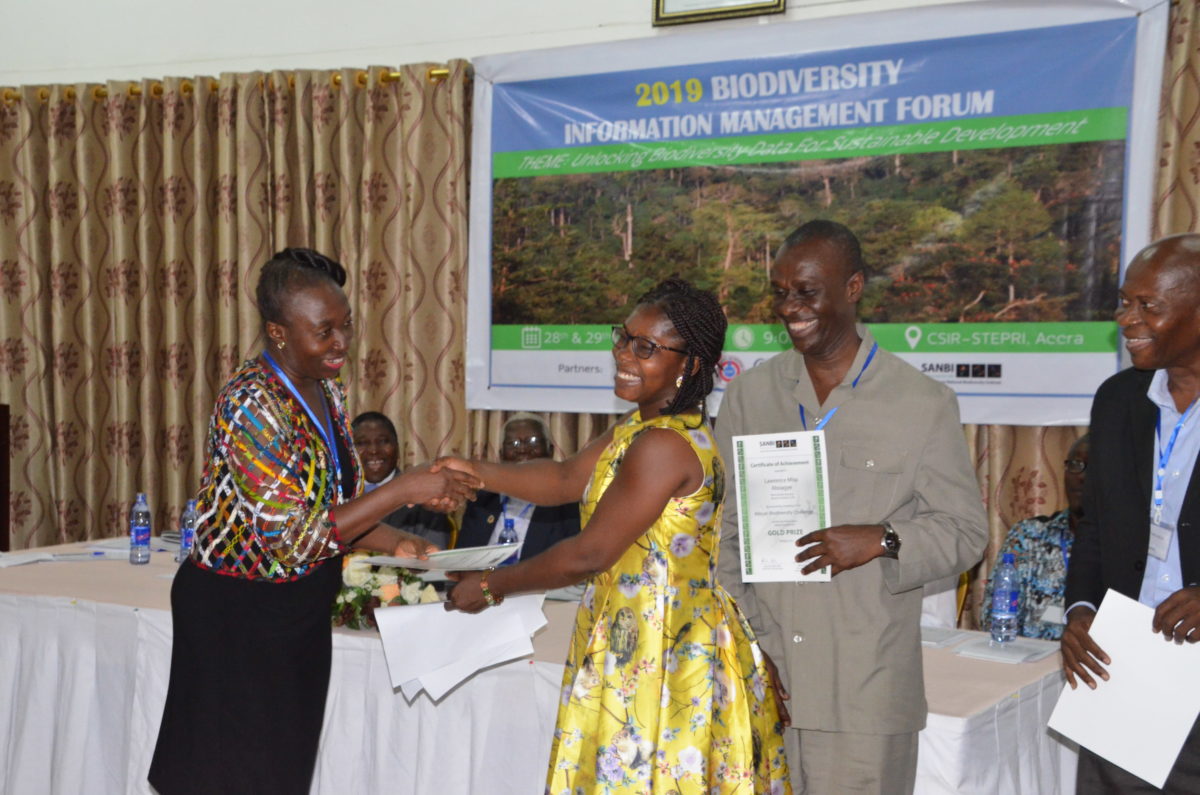Seattle, Washington — April 24, 2019 — The African Biodiversity Challenge began in 2017 when the Ghana, Malawi, Namibia, and Rwandan teams were chosen from over 40 initial applications, spanning 13 countries. Each team worked with South African National Biodiversity Institute (SANBI) to build a customized roadmap for assembling, digitizing, cleaning, and publishing data that previously only existed on paper, or were confined to specialized or localized specimen collections or databases. By providing training and technical support, the challenge process equipped the teams to undertake independent data mobilization. The ABC developed strategies for publishing policy-relevant national biodiversity data and strengthening regional capacity and collaboration in biodiversity information management. Through specialized Biodiversity Information Management Forums (BIMFs), the project aimed to galvanize emerging biodiversity informatics networks into a continental community of practice.
On March 28, 2019, the Ghana Team was awarded first place for publishing an impressive 23,362 biodiversity data records to the Global Biodiversity Information Facility (GBIF) a wide variety of policy-relevant datasets for developing agro-ecological policies and conservation in Ghana. The team was led by Conservation Alliance and supported by A Rocha, the Plant Genetic Resources Research Institute of the Council for Scientific and Industrial Research, and the Ghana Global Biodiversity Information Facility (GBIF) node at the University of Ghana. The award ceremony was the culmination of over a year of hard work as part of the African Biodiversity Challenge by the four teams, Ghana, Malawi, Namibia, and Rwanda, who collectively published 47,644 biodiversity data.
The teams’ performance was adjudicated by data quantity, quality and fitness for use for sustainable development. The second place was awarded to Team Malawi with 12,518 published records comprising of over 8,000 digitized specimens from the Museums of Malawi, as well as data from vegetation survey reports, local journals and environmental impact assessments published by the National Herbarium and Botanic Gardens, and Wildlife and Environment Society of Malawi. A bronze award was given to both the Rwanda Team and Namibia Team. The Rwanda team mobilized 2,164 freshwater biodiversity plants and invertebrate data through the ARBIMs portal of the Albertine Rift Conservation Society to be incorporated into the freshwater biodiversity information system being planned by the Centre of Excellence in Biodiversity and Natural Resource Management at the University of Rwanda through a JRS planning grant. The Namibia Team populated an existing national data platform, the Environmental Information Service of Namibia, with a large dataset on radio-collared animal movement from Greater Sossusvlei-Namib Landscape association that can help to inform fencing policies and landscape-scale management, as well as several resources’ metadata (with potential to mobilise c. 240,000 records) from the Ministry of Environment and Tourism documenting aerial surveys conducted on protected areas and community-owned conservancies as well as wildlife utilization data from hunting permits, all of which can help inform wildlife economy policies relating to the creation and management of wildlife-based socio-economic systems.

The project was led by Matthew Child, Biodiversity Informatics Project Coordinator at SANBI, and was built on a previous successful, JRS-funded project aimed at developing a Biodiversity Data Mobilization Strategy for Africa to increase the availability of African biodiversity information. Through increased visibility of, and investment in, shared biodiversity data, SANBI hopes the African Biodiversity Challenge has resulted in a greater availability of information about the continent’s incredibly rich flora and fauna, and will catalyze similar efforts in other African countries. With the momentum from the ABC project, SANBI hopes that a community of practice for biodiversity informatics across the continent can better cooperate and produce best practice guidelines for monitoring biodiversity for the future of sustainable development. The goal is to support sustainable development on a continent in the midst of profound socio-economic change.
When decision-makers have access to high quality biodiversity data, they are able use it to inform conservation and development decisions. Information on the current and historic distributions of plants and animals is essential to sustainable development and can be used to, for example, predict range potentials of invasive species, identify high-risk areas for zoonotic disease transmission, and inform protected area expansion strategies. In the course of this project, the mobilization of relevant data has led to decision-making informed by the data. For example, managers of the Community Resource and Environment Management Areas (CREMAs), a policy managed under the Forestry Commission, have used the Ghanaian data to inform management plans around Mole National Park, particularly in recording indicator species such as the Wild Water Buffalo (Bubalus bubalis), and to support the creation of new CREMAs. The CoEB thesis dataset from the Rwandan team has also been used to model the spread of the invasive species Mexican sunflower (Tithonia diversifolia) on a continental scale[1]. Further use-case examples will be documented throughout 2019 and presented as case studies.
Although the award ceremony may be over, connecting biodiversity data to decision-making is an ongoing process where BIMFs can be used as annual events to bring together data providers and end-users to identify data priorities for sustainable development. Maintaining these partnerships will be an exciting opportunity to increase access to relevant data as well as data-driven decision-making. “My hope is that these teams form the nucleus of a functional and sustainable biodiversity informatics network by solidifying potential partnerships identified throughout the project and developing spin-off projects through national resources,” says Child. Positive outcomes of the inaugural BIMFs are already emerging. For example, following the Rwandan BIMF in October 2018, the Ministry of Environment has formally establishing a BIMF Task Group to continue the partnerships and help execute the road map for a biodiversity information system. The prize money US$30,000 for first, US$20,000 for second, and US$10,000 for third place, awarded to the teams through the Collaboration Partner of each team (Conservation Alliance in Ghana, Musuems of Malawi in Malawi, University of Rwanda in Rwanda and Ministry of Environment and Tourism in Namibia) will go towards supporting the teams to implement the road maps developed throughout the project.
Congratulations to all the teams for their tremendous work to increase access to biodiversity across the African continent. To read more about the project, click here.
[1] Obiakara MC, Fourcade Y. 2018. Climatic niche and potential distribution of Tithonia diversifolia (Hemsl.) A. Gray in Africa. PLOS ONE 13:e0202421

